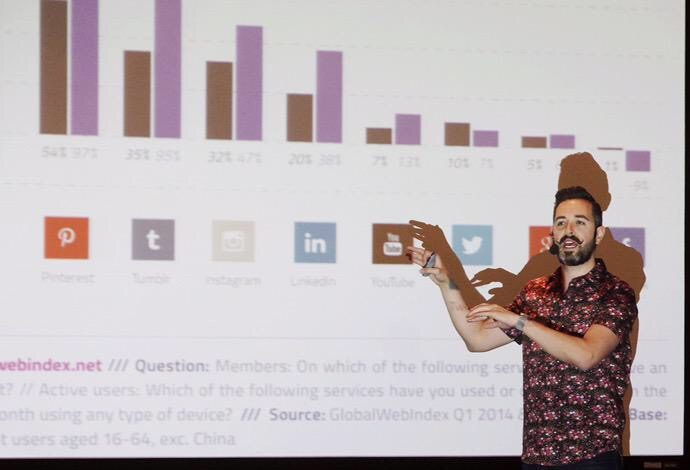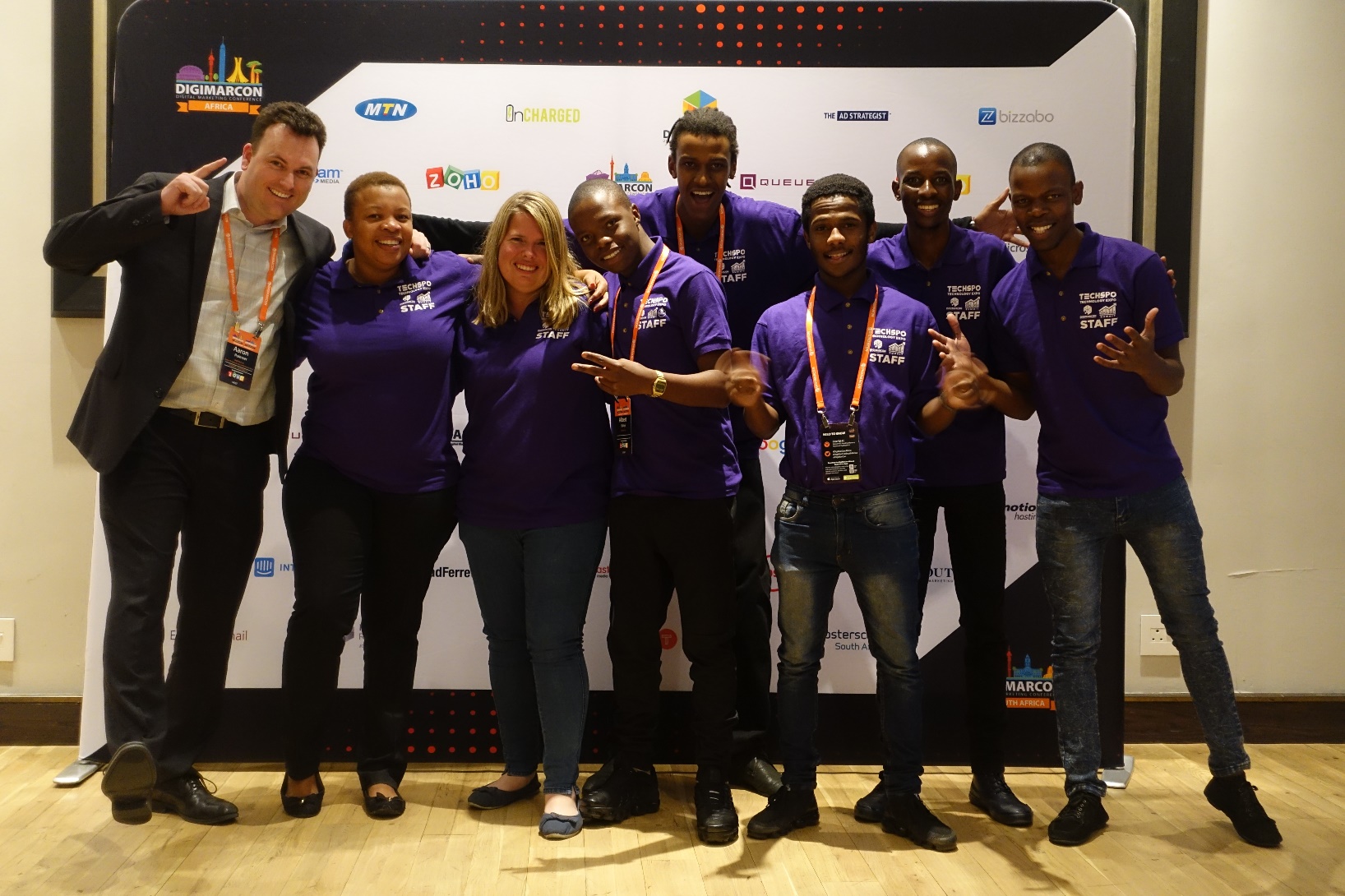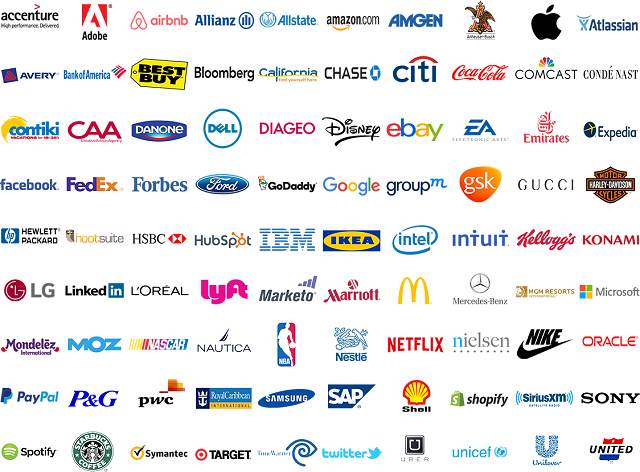Posts Tagged "Brand awareness"
Articles
- Best Marketing Conference Sponsorship
- What Does it Mean to Be an Exhibitor at a Conference?
- What Is the Biggest Social Media Conference?
- What Is an Innovation Conference?
- What Is a Typical B2B Event?
- What Are the Cloud Technology Events in 2025?
- Marketing Event Volunteer Opportunities: A Comprehensive Guide
- Digital Marketing Event Volunteer Opportunities Near Me
- What Does a Volunteer Do at a Conference?
- Is DigiMarCon Worth It?
- Is DigiMarCon Good?
- What is the Biggest Marketing Forum?
- What are Digital Marketing Conferences?
- Marketing Conference Exhibiting: Your Guide to Success
- Digital Summit Comparison: A Closer Look at DigiMarCon
- Digital Marketing Conference
- Digital Marketing Events: Your Guide to Success in 2025
- Marketing Conferences: Unlocking Your Business Potential in 2025
- What Is The Future of Digital Marketing in 2030?
- B2B Event Marketing Strategy: Unlocking Success For Your Business
- Why B2B Event Marketing?
- What Should a B2B Marketing Strategy Include?
- Top Marketing Conferences for 2025
- What Is the Future of Marketing in 2025?
Digital Marketing Conferences
- NORTH AMERICA
- DigiMarCon Cruise
(New Orleans, LA, USA) - DigiMarCon West
(Los Angeles, CA, USA) - DigiMarCon Northwest
(Seattle, WA, USA) - DigiMarCon Canada West
(Vancouver, BC, USA) - DigiMarCon Canada
(Toronto, ON, Canada) - DigiMarCon Canada East
(Montreal, QC, Canada) - DigiMarCon Florida
(Orlando, FL, USA) - DigiMarCon Gulf Coast
(Houston, TX, USA) - DigiMarCon Southern California
(San Diego, CA, USA) - DigiMarCon Midwest
(Chicago, IL, USA) - DigiMarCon Mid-South
(Nashville, TN, USA) - DigiMarCon Great Lakes
(Detroit, MI, USA) - DigiMarCon North
(Minneapolis, MN, USA) - DigiMarCon Central
(Kansas City, MO, USA) - DigiMarCon Texas
(Dallas, TX, USA) - DigiMarCon New England
(Boston, MA, USA) - DigiMarCon Mid-Atlantic
(Philadelphia, PA, USA) - DigiMarCon South Florida
(Miami, FL, USA) - DigiMarCon Southeast
(Atlanta, GA, USA) - DigiMarCon Central Florida
(Tampa, FL, USA) - DigiMarCon East
(New York, NY, USA) - DigiMarCon South Atlantic
(Charlotte, NC, USA) - DigiMarCon America
(Washington, D.C. USA) - DigiMarCon Northern California
(San Francisco, CA, USA) - DigiMarCon Rocky Mountains
(Denver, CO, USA) - DigiMarCon South
(San Antonio, TX, USA) - DigiMarCon Silicon Valley
(San Jose, CA, USA) - DigiMarCon Orange County
(Anaheim, CA, USA) - DigiMarCon Southwest
(Phoenix, AZ, USA) - DigiMarCon World
(Las Vegas, NV, USA)
- DigiMarCon Cruise
- LATIN AMERICA
- EUROPE
- MIDDLE EAST
- AFRICA
- ASIA PACIFIC
- DigiMarCon Hawaii & Pacific
(Honolulu, HI, USA) - DigiMarCon Asia & Japan
(Tokyo, Japan) - DigiMarCon New Zealand
(Auckland, New Zealand) - DigiMarCon Australia
(Sydney, Australia) - DigiMarCon Oceania
(Melbourne, Australia) - DigiMarCon Southeast Asia
(Singapore) - DigiMarCon India
(New Delhi, India) - DigiMarCon North Asia & China
(Shanghai, China)
- DigiMarCon Hawaii & Pacific
- VIRTUAL
Digital Marketing Blog
- What Makes DigiMarCon Stand Out (And Is It Worth It?) October 30, 2025
- Is DigiMarCon Worth Attending? A Complete Breakdown October 29, 2025
- DigiMarCon for Startups: Why Founders Shouldn’t Miss It October 29, 2025
- DigiMarCon Recap: What Went Down and What’s Next October 29, 2025

































Elevate Your Brand with PR & Cause Marketing
In today’s competitive marketplace, brands are looking for new ways to stand out. They want to connect with their audience on a deeper level. One effective strategy is using PR & Cause Marketing. It boosts brand reputation and helps social causes.
By adding social impact branding to marketing, brands can win loyal customers. This approach makes a brand stand out from others. It also helps the business grow.
Key Takeaways
Understanding PR and Cause Marketing
PR and cause marketing can boost a brand’s image. But, it needs a deep understanding of these strategies. Brands must first learn the basics of PR and cause marketing.
PR, or Public Relations, helps manage information between a brand and the public. It keeps the brand’s image positive. In nonprofit PR strategies, brands work with nonprofits for mutual benefits. This leads to impactful campaigns that connect with people.
Cause marketing is when a brand supports a social cause. It improves the brand’s image and helps society. To create cause marketing campaign ideas, brands need creativity and a clear understanding of their values and the cause.
Brands should think about their audience’s values when making campaigns. Aligning the campaign with the brand’s mission builds a real connection. This improves the brand’s image and helps society.
Knowing PR and cause marketing well is key for brands wanting to make a difference. By using nonprofit PR strategies and creative campaigns, brands can gain trust, improve their reputation, and engage more people.
The Benefits of Cause Marketing for Brands
Cause marketing is key for brands wanting a strong social identity. By using charity PR tactics and corporate social responsibility initiatives, brands show they care. This makes them more appealing to customers and boosts their reputation.
One big plus of cause marketing is building trust with customers. When a brand supports social causes, it looks real and reliable. This can make customers stick with the brand, as they feel it shares their values.
Also, cause marketing can make a brand look better. By backing social causes, brands seem responsible and caring. This draws in customers and the best employees, who want to work for a brand with a heart.
In the end, adding cause marketing to a brand’s PR plan can lead to growth. Through corporate social responsibility initiatives, brands can win loyal customers and leave a lasting mark.
How to Integrate Cause Marketing into Your PR Strategy
To blend cause marketing with your PR, align your brand with a social cause. This step is key for a story that connects with your audience and boosts your brand’s image.
Working with public relations for nonprofit organizations is a smart choice. It helps you reach more people and make a bigger difference. This partnership also makes your brand look good for caring about social issues.
Creating cause-related marketing campaigns needs careful thought. Pick a cause that fits your brand and speaks to your audience. Your campaign should clearly show your brand’s dedication to the cause.
Here are the main steps to mix cause marketing into your PR plan:
By taking these steps and staying true to your message, you can make a cause marketing campaign that improves your brand’s image. It also helps make a positive change in society.
Examples of Successful Cause Marketing Campaigns
Looking at successful cause marketing campaigns can teach businesses a lot. Many brands have made big differences with their efforts. This shows how powerful this approach can be.
Dove’s Real Beauty Campaign is a great example. Dove aimed to boost self-esteem and challenge old beauty standards. They worked with educators and told powerful stories. This created a huge movement that touched millions.
This campaign didn’t just help Dove’s image. It also changed how people see beauty.
TOMS’ One for One model is another success story. TOMS donates a pair of shoes for every pair sold. This not only helps those in need but also builds a loyal customer base for TOMS.
The simplicity of TOMS’ message was key to their success.
Cause marketing campaigns like these show how business and social responsibility can work together. By using PR & Cause Marketing well, brands can meet their goals and help society.
By learning from these examples, businesses can create their own successful cause marketing campaign ideas. It’s about finding the right cause, making a strong message, and using the right channels to reach people.
Measuring the Success of Your Campaign
Measuring a Cause Marketing campaign’s success means looking at key performance indicators. These should match the campaign’s goals, like corporate social responsibility initiatives and nonprofit PR strategies.
To really understand how well the campaign did, consider these metrics:
It’s important to use the right tools and methods for analysis. This might include:
By looking at these metrics and using the right tools, businesses can learn a lot. They can make data-driven decisions to improve their campaigns.
It’s also key to compare the campaign’s results to its goals. This helps in making changes to do better next time.
Crafting Your Cause Marketing Message
Effective cause marketing starts with a clear message. This message shows your brand’s commitment to social responsibility. Social impact branding is about telling a story that connects with your audience and inspires them to act. By using charity PR tactics, you can make your brand more visible and help make a difference.
To make a strong cause marketing message, you must know your audience and what they care about. You need to find the right cause for your brand. Then, create a story that matches your brand’s values and mission. Good storytelling and branding can make your message powerful and drive change.
Here are some key elements to consider when crafting your cause marketing message:
By focusing on these elements and using social impact branding and charity PR tactics, you can craft a message that connects with your audience. This message will inspire them to take action.
Collaborating with Nonprofits and Charities
Cause marketing works best when brands team up with nonprofits. This partnership uses public relations for nonprofit organizations to make a big difference.
First, brands need to find nonprofits that match their values and goals. This is key for a campaign to be real and effective.
After finding the right partners, it’s important to make a deal that works for both. This means talking clearly about what each side expects and what they’ll get. Public relations strategies help show the partnership in a good light to everyone.
Good teamwork means checking in and tweaking the plan as needed. Brands and nonprofits should work together to see how the campaign is doing. This way, they can make it better and build a strong partnership.
Together, brands and nonprofits can do great things. They can get more people to know about the brand, make customers more engaged, and help society in meaningful ways.
Engaging Employees Through Cause Marketing
Companies can build a culture of social responsibility by involving employees in PR and cause marketing. This approach boosts the company’s image and improves job satisfaction. It also strengthens teamwork.
When employees join in corporate social responsibility initiatives, they feel more connected to the company. This can make them more productive and loyal. They are more likely to stay with a company that cares about the community.
Cause marketing can be many things, like volunteer days or fundraising. For example, companies can host charity events or donation drives. This encourages employees to help out and supports a positive company culture.
To really engage employees, it’s key to share the company’s PR & Cause Marketing plans. Involve them in making decisions. Use updates, team meetings, and campaigns to show the company’s dedication to social responsibility.
This way, companies can make a workplace that’s both productive and rewarding. Employees are more likely to be engaged, motivated, and committed to the company’s mission and values.
Potential Challenges in Cause Marketing
Cause marketing has many benefits, but it also comes with challenges. One big issue is keeping messages authentic. Today’s consumers can spot fake or shallow support for social causes.
Inauthentic Messaging can hurt a brand’s reputation. To stay true, brands must make sure their cause marketing is real. This means careful planning and execution. They need to develop PR strategies that speak to their audience.
Another problem is not keeping promises. Brands must follow through on their commitments. This could be donating, volunteering, or using sustainable practices. Effective cause marketing campaign ideas often involve working with nonprofits. Brands need to be open about their goals and results.
To face these challenges, brands can use several strategies:
By knowing the challenges of cause marketing and using strategies to beat them, brands can make stronger connections with their audience. This can improve their reputation and lead to long-term success.
Future Trends in PR and Cause Marketing
PR and Cause Marketing are always changing. Social media is key in making Cause Marketing efforts bigger. Brands must also be open and honest in what they say.
Using social impact branding and charity PR tactics helps brands stay current and responsible. This way, they can build a good image and succeed in the long run.
The future of PR and Cause Marketing is about real connections and making a difference. As things change, brands need to keep up and get creative. They should use data to guide their actions and make a bigger impact.
FAQ
What is PR & Cause Marketing, and how can it benefit my brand?
PR & Cause Marketing combines public relations and marketing for good. It boosts your brand’s image and helps society. By adding social impact to your marketing, you gain loyal customers and stand out from others.
How do I choose the right cause to partner with for my Cause Marketing campaign?
Pick a cause that matches your brand’s values and appeals to your audience. It’s important to find organizations that fit your goals for a successful partnership.
What are some effective metrics for measuring the success of a Cause Marketing campaign?
Use metrics like brand awareness, customer engagement, and social media to gauge success. Also, track sales, loyalty, and the campaign’s social impact.
How can I ensure authenticity in my Cause Marketing efforts?
Be true to your cause and open about your involvement. Avoid pretending to be something you’re not. Your actions should match your words.
Can Cause Marketing really impact employee engagement and company culture?
Yes, it can. Cause Marketing makes employees feel connected and valued. It helps build a sense of purpose in your company.
What are some common pitfalls to avoid in Cause Marketing?
Don’t fake your message or promise too much. Be clear about your role in the cause. Learn from others and stay true to your values.
How can social media amplify my Cause Marketing efforts?
Social media boosts your visibility and reaches more people. It starts conversations and encourages others to support your cause. Use it to make a bigger impact.
Boost Your Brand with Influencer Marketing
In today’s digital world, influencer marketing is key for brands wanting to grow. By working with influencers, brands reach new people and gain trust through real endorsements.
This method helps businesses use brand partnerships to boost engagement and sales. This way, companies can meet their marketing targets better.
Key Takeaways
Understanding Influencer Marketing
Social media is huge, and influencer marketing is a big part of it. It’s about working with people who have lots of followers online. This helps brands reach more people.
What is Influencer Marketing?
Influencer marketing is a way to use social media marketing. It’s when influencers, who are experts in their field, talk about products. This helps brands get their message out to the right people.
First, you find the right influencers for your brand. Then, you work with them to make sponsored content. After that, you check how well the campaign did using key performance indicators (KPIs).
Key Benefits of Influencer Marketing
Influencer marketing has many good points. Here are some:
By getting how influencer collaboration works, brands can use social media influencers to grow. This helps them meet their marketing goals.
Types of Influencers to Consider
Influencer marketing includes many types of influencers. Each has its own strengths and audience. Knowing these categories is key to a good influencer strategy that meets your brand’s goals.
Mega Influencers
Mega influencers have huge followings, often in the millions. They can help brands get noticed by many people. But, their appeal might not always fit your brand, and their engagement can vary.
Micro Influencers
Micro-influencers have smaller, but very engaged audiences. They are known for being real and trusted by their followers. They’re great for brands targeting specific groups, as they often get more engagement than mega influencers.
Nano Influencers
Nano influencers have small followings, usually in the thousands. But, they have very loyal followers. They’re perfect for campaigns aimed at very specific audiences.
When planning an influencer strategy, think about what each type offers. Choose mega influencers for wide reach, micro-influencers for niche engagement, or nano influencers for targeted campaigns. Knowing each type’s strengths helps you make better choices.
How to Identify the Right Influencer for Your Brand
Finding the right influencer for your brand can be tough. It’s key for successful influencer outreach. You can’t just look at how many followers they have. You need to check if their audience and content fit your brand’s goals.
Assessing Audience Demographics
Knowing who an influencer’s audience is matters a lot. Look at their age, where they are from, and what they like. This helps make sure they match your target market. Social media analytics can give you the details you need.
If your brand is for young adults who love fitness, choose influencers with followers in that group. This is crucial for your influencer campaigns to do well.
Aligning Brand Values and Messaging
It’s also important to match your brand’s values and message with the influencer’s content. Check their past posts and how they interact with their audience. This ensures their content fits your brand’s image.
For example, if your brand focuses on eco-friendly products, team up with influencers who support sustainability. This makes your brand look more credible and builds a stronger bond with your audience.
Crafting a Compelling Influencer Brief
A well-structured influencer brief is key for successful partnerships between brands and influencers. It outlines the campaign’s goals, content rules, and how to measure success. This ensures everyone is on the same page.
To create a great brief, you need to focus on a few important things. It not only explains the project’s scope but also shapes the campaign’s vibe. This vibe affects the content made and how the audience reacts to it.
Essential Elements of an Influencer Brief
An effective influencer brief should have a few key parts. These are:
Setting Clear Objectives
Setting clear goals is vital for any influencer marketing campaign’s success. By knowing what you want to achieve, you ensure both your brand and the influencer are working towards the same goals. This focus helps in making content that speaks to the audience and boosts influencer engagement.
Clear objectives also make it easier to measure campaign success. By setting specific, measurable goals, brands can see how well their influencer partnerships are doing. This helps in making better choices for future campaigns.
Different Approaches to Influencer Collaborations
The world of influencer marketing is vast. It offers many ways to collaborate, each tailored for specific brand goals. Knowing these methods is key to making campaigns work well.
Influencer collaborations come in several forms. Each has its own benefits and chances for brand growth. The main types are sponsored content, product reviews, and giveaways or contests.
Sponsored Content
Sponsored content is a favorite way for brands to work with influencers. Influencers make posts, videos, or stories that show off a brand’s product or service. This method lets brands tell their story in a creative way and can really connect with their audience.
Product Reviews
Product reviews are when influencers test and share their thoughts on a brand’s product or service. This approach gives an authentic endorsement. Influencers share their real experience with their followers.
Giveaways and Contests
Giveaways and contests are fun ways to get people involved and excited about a brand. By asking followers to join in, brands can get more eyes on them and reach more people.
By understanding and using these different influencer collaboration methods, brands can create strategies that meet their marketing goals. These strategies will also connect well with their target audience.
Measuring the Success of Influencer Campaigns
The real value of influencer marketing is in its measurable results. It’s crucial to evaluate campaigns well. Brands need to focus on the right metrics and use the right tools for tracking.
To really understand your influencer strategy, you need to dive deep into the data. Look at more than just surface-level metrics. Also, analyze deeper insights that show how well the campaign did overall.
Key Performance Indicators (KPIs)
KPIs are key measures to check if an influencer campaign was successful. Important KPIs include:
By watching these KPIs, brands can really understand how their campaign did. They can then make smart choices to improve their influencer strategy.
Tools for Tracking Campaign Performance
To track influencer campaign performance well, brands use various tools. These tools give detailed insights into campaign metrics. Some tools include:
By using the right KPIs and tools, brands can make their influencer marketing better. This ensures they get the best return on investment from their campaigns.
Legal Considerations in Influencer Marketing
Influencer marketing is growing fast, and brands must deal with a lot of legal rules. They need to be open and follow the law to succeed. Knowing the legal side of influencer outreach is key for a good campaign.
Understanding Disclosure Guidelines
The Federal Trade Commission (FTC) has rules for influencers to follow. They must tell their followers about their brand deals. This is very important for micro-influencers with smaller but very engaged audiences.
Brands should teach their influencers about these rules. They need to know how and when to share sponsored content. If they don’t, they could face fines.
Contracts and Agreements
Having a good contract is vital when working with influencers. It should cover what work needs to be done, how much they’ll get paid, and what kind of content is expected. For micro-influencers, contracts might need to be more flexible.
Important things to include in contracts are:
With a solid contract, brands can protect themselves. It helps influencers know what’s expected of them. This leads to better and legal campaigns.
The Role of Social Media Platforms in Influencer Marketing
Influencer marketing is closely tied to social media. Platforms like Instagram, TikTok, YouTube, and Twitch help influencers connect with their followers. Each platform offers unique features and attracts different types of users, making them perfect for influencer collaborations and influencer campaigns.
Instagram and TikTok
Instagram and TikTok stand out for influencer marketing. They focus on visuals and have high engagement rates. Instagram has features like Stories, Reels, and IGTV for various content types. TikTok, with its short videos, is great for creative and viral content, appealing to younger audiences.
Both platforms are great for sponsored content, product reviews, and influencer takeovers. They help brands reach their target audience in fun and creative ways.
YouTube and Twitch
YouTube and Twitch focus on different types of content. YouTube is perfect for in-depth reviews, tutorials, and vlogs. It’s a top search engine, helping influencers build authority and a loyal fan base. Twitch, known for live gaming, also hosts music and art, offering a space for real-time interaction.
These platforms are ideal for campaigns needing detailed content or live interaction. They help brands achieve their marketing goals through authentic and engaging influencer partnerships.
Trends Shaping Influencer Marketing Today
To stay ahead in influencer marketing, you need to know the latest trends. You also need to be ready to change with how people use the internet. Brands must keep up with these changes to grow their online presence and connect with people.
Rise of Video Content
Video content is becoming more popular in influencer marketing, thanks to TikTok and YouTube. Video content offers a more immersive and engaging experience for viewers. It lets influencers show off products and services in a lively way.
Because of this, brands are teaming up with influencers who make great videos. These videos speak to their audience in a powerful way.
New video formats like live streaming and interactive videos are also emerging. These formats help influencers connect with their followers in real-time. This builds a sense of community and boosts influencer engagement. Brands can make their campaigns more impactful and effective with these formats.
Focus on Authenticity
Authenticity is another big trend in influencer marketing. People want real connections with influencers and the brands they work with. Authenticity is key to a successful influencer campaign. Influencers who are open, honest, and true to themselves build trust with their audience.
Social media influencers who focus on being real can thrive in this changing world. They can make content that truly connects with their followers. This leads to better brand partnerships and more engagement.
Brands need to adjust their influencer marketing plans to succeed. By focusing on video content and authenticity, they can make campaigns that really speak to their audience. This approach can lead to better results and a stronger online presence.
Case Studies: Successful Influencer Marketing Campaigns
The power of influencer marketing is in connecting brands with their audience through real stories. It helps brands reach new people, grow awareness, and boost sales. Here, we’ll look at successful influencer marketing campaigns from different fields. We’ll see what strategies and tactics worked well.
Lifestyle Brands
Lifestyle brands lead in influencer marketing. They team up with influencers to show their products in real life. For example, a famous outdoor brand teamed up with an adventure influencer to promote eco-friendly clothes. This led to more brand mentions and sales among those who care about the environment.
Another example is a home decor brand. They worked with interior design influencers to show their products in stylish homes. This campaign increased website visits and made the brand a trendsetter in home decor.
Beauty and Wellness Brands
The beauty and wellness world has also thrived with influencer marketing. A skincare brand teamed up with a beauty influencer to launch a new product. The influencer shared their personal experience, focusing on natural ingredients and sustainability. This campaign greatly increased sales and social media followers.
These examples show how influencer marketing can help brands succeed in various fields. By learning from these strategies and tactics, businesses can create their own winning influencer marketing campaigns.
Future of Influencer Marketing
The world of influencer marketing is changing fast. New tech and shifts in what people want are driving these changes. For brands to succeed, they need to make smart partnerships.
Emerging Trends and Opportunities
Micro-influencers are becoming more popular. They offer a focused audience and high engagement. Working with them lets brands connect with specific groups in a real way.
Adapting to Changing Consumer Behavior
People want real and open communication from brands. So, brands must pick influencers who share their values. They also need to build true connections with their followers.
By keeping up with trends and choosing the right influencers, brands can grow their influence. They can stay relevant in a constantly changing online world.
FAQ
What is influencer marketing, and how can it benefit my brand?
Influencer marketing is when brands team up with people who have lots of followers online. This helps brands reach more people. It can make your brand more known, trusted, and targeted.
How do I identify the right influencer for my brand?
First, check if the influencer’s followers match your target market. Then, make sure your brand’s values and message fit with theirs. This keeps things real and true to your brand.
What are the different types of influencers, and how do I choose the best one for my campaign?
There are mega, micro, and nano influencers. Mega influencers have lots of followers, but lower engagement. Micro and nano influencers have fewer followers but more engagement. Pick the one that fits your campaign goals best.
What are the key elements of a successful influencer brief?
A good influencer brief has your campaign goals, content rules, and how to measure success. Clear goals help everyone work together better, making your campaign stronger.
How do I measure the success of my influencer marketing campaigns?
Track things like how many people engage, how many see your posts, and how many buy from you. Use tools to see how well your campaigns are doing. This helps you make better choices for future campaigns.
What are the legal considerations I need to be aware of when engaging in influencer marketing?
Know the rules about being clear about who paid for the posts. Make sure contracts with influencers are clear and protect both sides. This keeps things fair and legal.
How can I ensure that my influencer collaborations are authentic and effective?
Match your brand’s values with the influencer’s content. Choose influencers who really care about your brand. This builds trust and makes your campaigns work better.
What role do social media platforms play in influencer marketing?
Social media is where influencers meet their fans. Know what each platform is good for, like Instagram or TikTok. This helps you make your campaigns more effective.
What are the current trends shaping influencer marketing, and how can I adapt my strategies?
Trends include more video content and being real. Use more videos and focus on being genuine. This keeps you ahead in the influencer marketing world.